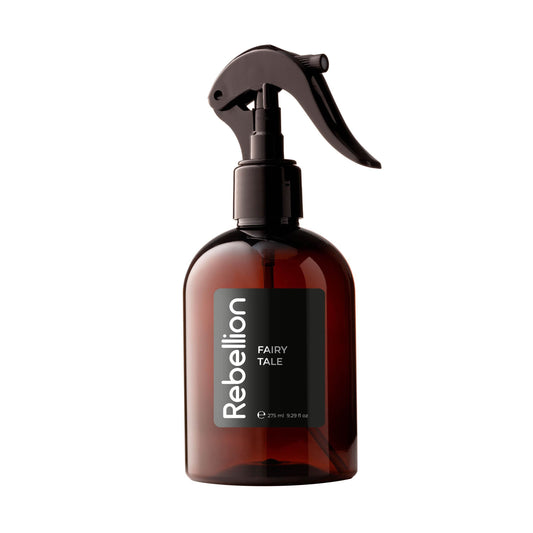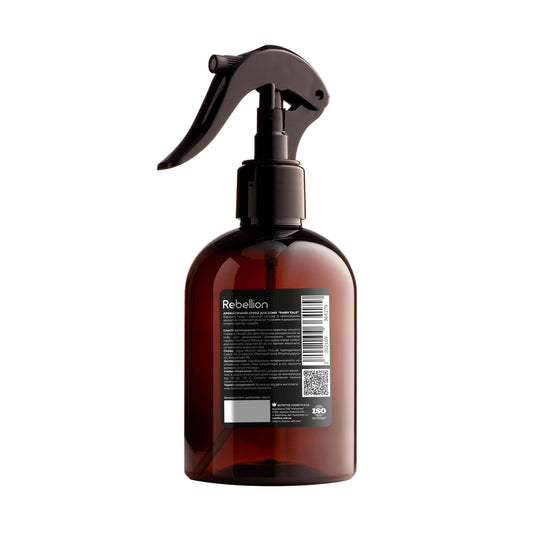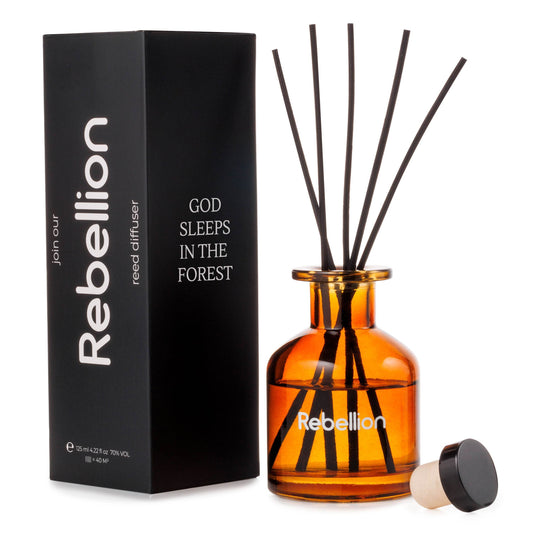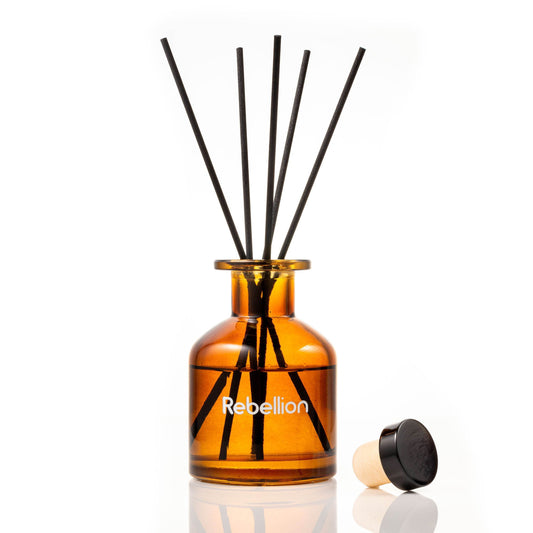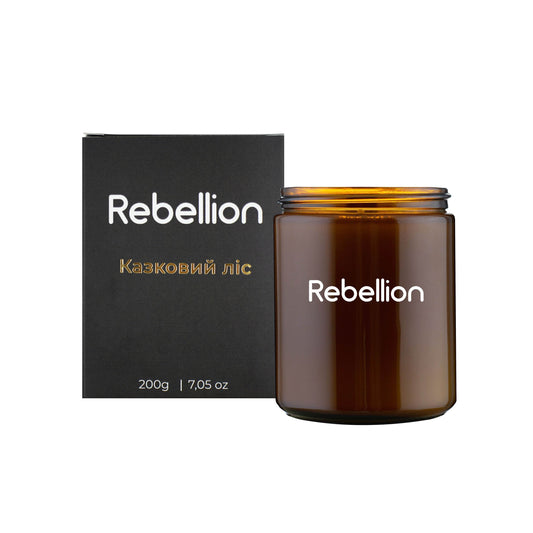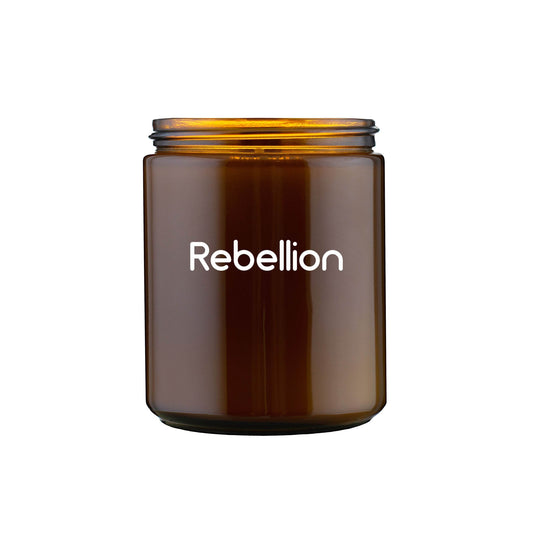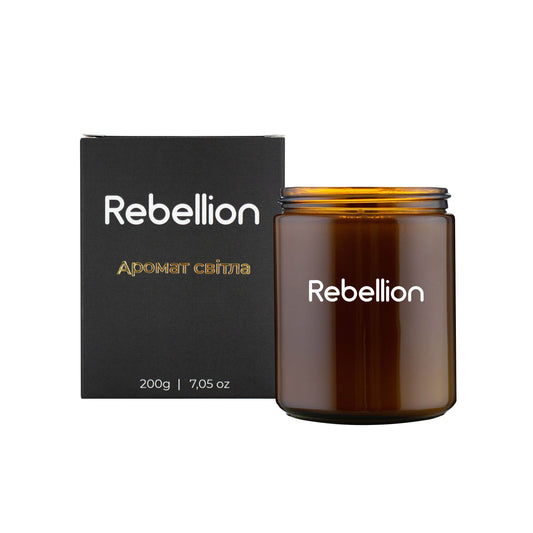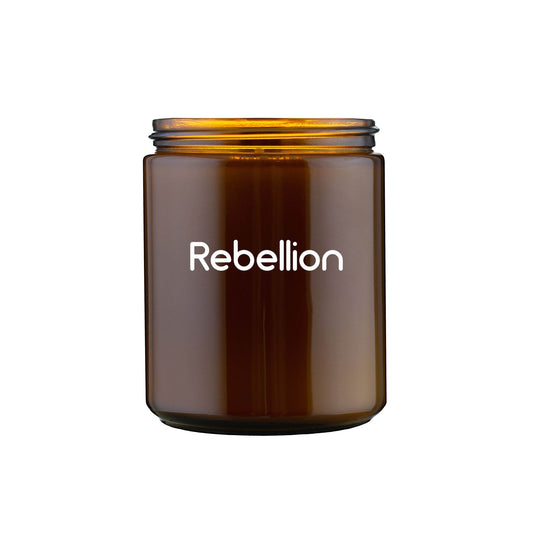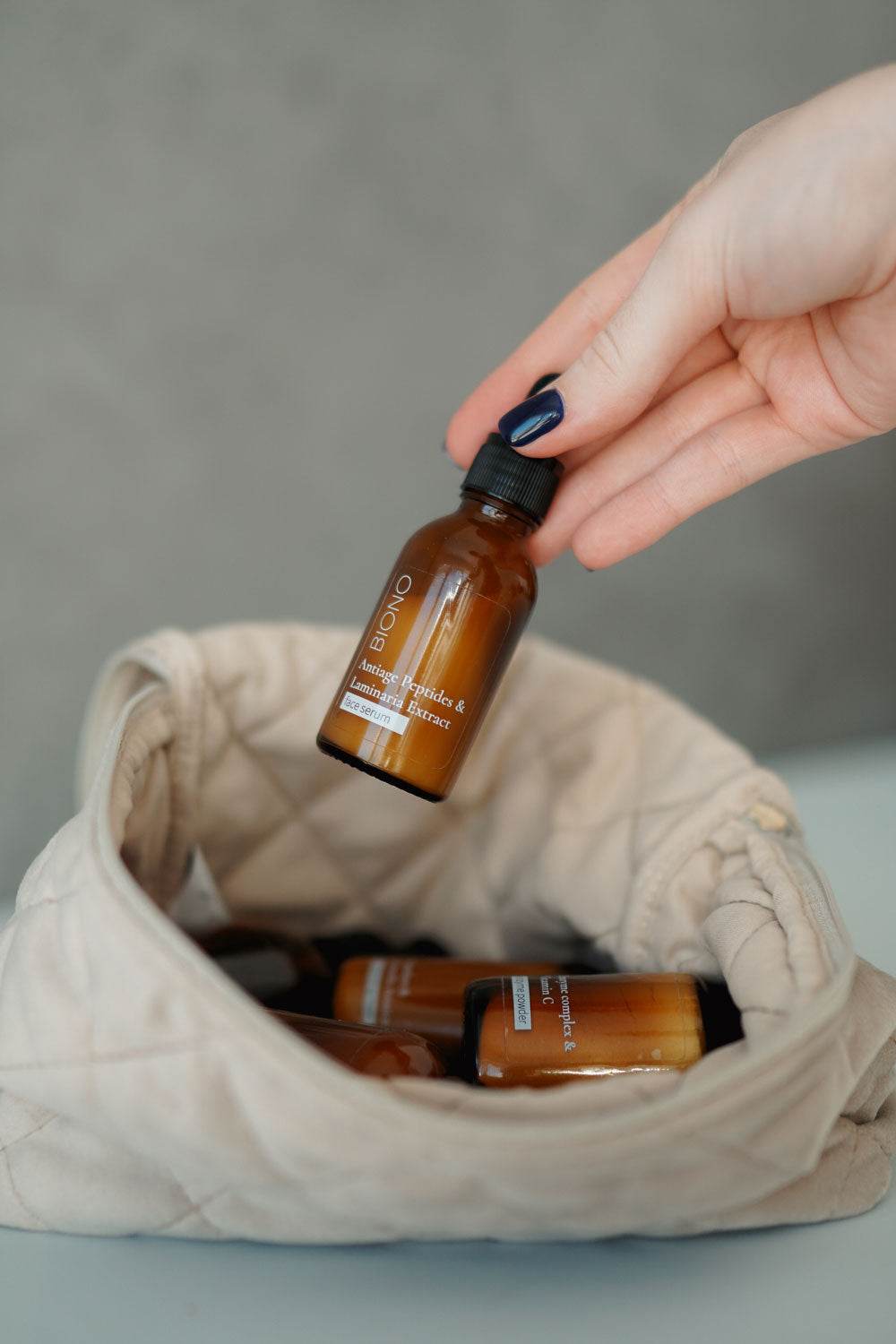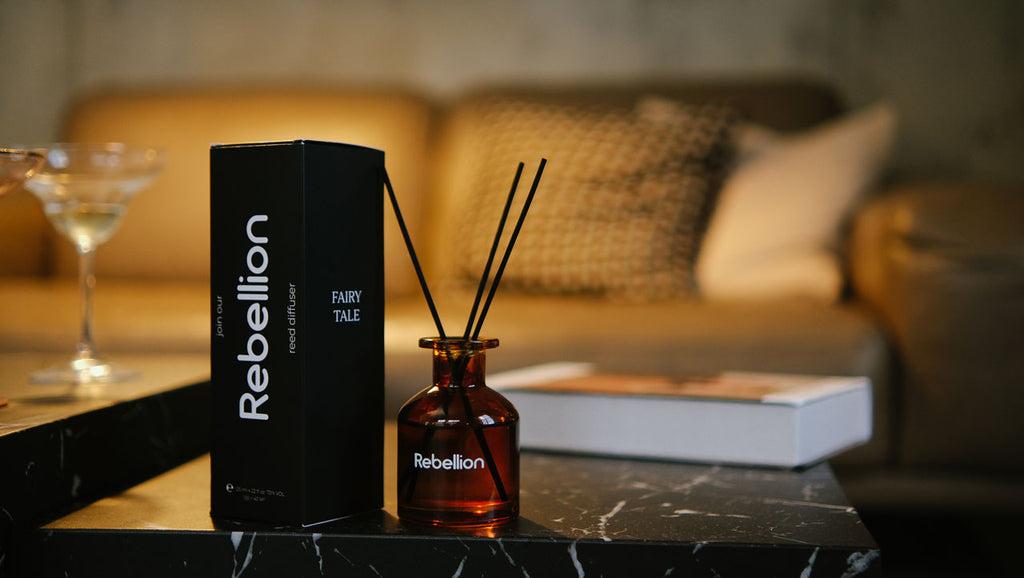
Luxury Scented Candles and Aroma Diffusers: The Art of Creating the Perfect Atmosphere at Home
Share
When was the last time you walked into a room and immediately felt that the place was special? Maybe it was a boutique hotel, where the aroma of lemongrass and bergamot greeted you upon entry. Or a luxurious spa, where the air was filled with notes of lavender and eucalyptus. Or maybe it was a friend's house, where you immediately felt cozy thanks to the warm aroma of vanilla and sandalwood.
Scents have incredible power – they can transport us back to memories, change our mood, and even influence productivity. That's why creating the right scented atmosphere in your home isn't just a whim, but a true art form that deserves your attention.
Scented candles and aroma diffusers: more than just a pleasant scent
Before delving into the world of luxury candles and diffusers, it's worth understanding what happens in our brains when we inhale a particular aroma. The olfactory system is the only one of the five senses directly connected to the brain's limbic system, responsible for emotions and memory.
That's why the aroma of a freshly baked cake can instantly transport you back to your childhood with your grandmother, and the scent of a sea breeze can transport you to a vacation by the ocean. And we can harness this power to create atmosphere in various rooms of our home.
Neuroscientific studies show that scents are processed faster in the brain than images or sounds. Inhaling an aroma activates an emotional response in just 0.3 seconds. This explains why scent can trigger such powerful and immediate memories—a phenomenon known as the "Proust effect," named after the famous scene with Madeleine in Marcel Proust's novel.

Debunking the myth of the "universal home fragrance"
One of the biggest mistakes is trying to find one "perfect" scent for the entire home. It's like wearing the same clothes for every occasion—from the gym to the theater. Each space has its own function, its own energy, and the scent should reflect that.
The living room is the heart of the home, where we welcome guests and spend evenings with family. Complex, multi-layered compositions work well here: fig with cedar, tobacco with vanilla, or the classic bergamot with woody notes. These aromas create a sense of both luxury and coziness.
Why it works? The living room is a social space where we want people to feel both comfortable and impressed. Deep, complex aromas signal sophistication, while warm base notes (like vanilla or amber) provide a sense of security. It's a balance between "wow" and "welcome."
A bedroom needs calming, yet not boring, aromas. Forget the clichéd lavender – try a blend of neroli and white tea, iris with cashmere woods, or the delicate scent of magnolia with musk. They'll help you relax while remaining interesting enough.
The secret to the perfect bedroom scent? It should be like a good book before bed—engrossing, but not overly stimulating. Floral notes with a velvety woody base create this magical balance. And avoid anything too sweet—it can disrupt sleep.
The office requires freshness and concentration. Citrus with mint, rosemary with eucalyptus, or fresh water compositions come to the rescue. They stimulate mental activity without cluttering the space.
Interesting fact: Studies show that the aroma of rosemary can improve memory by up to 15%. Citrus increases alertness, and mint helps with problem-solving. So yes, your diffuser can actually make you more productive.
The bathroom is your personal spa. The delicate aromas of white tea with ginger, sea salt with minerals, or bamboo with green tea will transform your daily routine into a true ceremony.
The bathroom is special – it's the one place in the house where we're truly alone. Aromas here should support transformation: energizing in the morning, and helping to wash away the day in the evening. That's why it's worth having two different candles here: one stimulating, the other calming.
Candles vs. Diffusers: What to Choose and When?
This question is like the "coffee or tea" debate – both options are great, but for different situations.
Scented candles are a ritual, a theatricality, a moment of "here and now." Lighting a candle is a conscious act that signals: "Time to stop and enjoy the moment." Luxurious candles with natural soy or rapeseed wax and a wooden wick not only smell wonderful—they create a multisensory experience. The gentle crackle of the wick, the soft flicker of the flame, the slow melting of the wax—it's a meditation for the modern person.
There's something deeply human about it—fire has fascinated us for thousands of years. Lighting a candle is also a micro-ritual that helps our brain shift from "doing" mode to "being" mode. In an age where we're constantly "online," such a simple gesture can be a form of digital detox.
When to use candles:
- During the evening rituals: bath with a book, yoga, meditation
- For a romantic dinner or with friends
- When you need to create a "now" mood
- On weekends when you have time to enjoy the process
- During work requiring creativity, the movement of the flame stimulates the right hemisphere of the brain
Aroma diffusers are the silent workers of the fragrance world. They operate 24/7, maintaining a constant, unobtrusive aroma in the room. It's like a soundtrack in the background of your life – you don't always consciously notice it, but it shapes the overall atmosphere.
The beauty of a diffuser lies in its subtlety. Unlike candles, which "announce" their presence, diffusers work subliminally. Guests may not even realize you're using a diffuser—they'll simply feel at home in your home.
When to use diffusers:
- In the living room and hallway – for a constant sense of hospitality
- In the bedroom – if you don't like open fire
- In the office – to maintain concentration throughout the day
- In the bathroom – where candles burn out quickly due to humidity
- In the wardrobe – the aroma will subtly transfer to the clothes

Secrets that producers are silent about
Temperature matters. Luxury candles are designed to melt evenly at a specific temperature. If the room is too cold, the candle won't reach its full potential. The optimal temperature is 20-22°C.
Here's something you probably didn't know: in very warm rooms (above 25°C), the aroma will be more intense, but the candle will burn faster. In colder rooms, it will burn slower but less intensely. It's like wine – serving temperature is crucial.
The first lighting is the most important. When using for the first time, allow the wax to melt all the way to the edges. This takes 2-3 hours, but it creates a "burning memory"—if you don't, the candle will always burn in a tunnel.
This phenomenon is called "memory ring," and it's the true curse of candles. The wax "remembers" the first burning session and will only ever melt to that level. You'll lose half the candle and your money. So yes, those first 2-3 hours are an investment.
Rotation is your best friend. Our sense of smell adapts to scents within 15-20 minutes. Therefore, it's best to have 3-4 different scents for each room and change them every 2-3 weeks. This way, you'll always notice and enjoy the aroma.
This is called "olfactory fatigue" or "odor adaptation." Your brain literally stops registering odors that are constantly present—an evolutionary mechanism that allows us to detect new, potentially important odors. Rotation "resets" it.
The quality of the reeds in your diffuser is critical. Cheap plastic reeds don't absorb the oil properly. Natural rattan reeds with open capillaries are the only viable choice. And yes, they need to be turned once a week.
Pro tip: the number of reeds controls the intensity. Start with half the amount included and add gradually. More isn't always better – too intense a scent can cause headaches.
Humidity affects fragrance distribution. In dry rooms (especially in winter with the heating on), fragrances evaporate faster and fade away more quickly. In humid rooms, they linger longer but are less intense. Use a humidifier for optimal fragrance distribution.
We create an aromatic wardrobe
Just as you have different clothes for different seasons and moods, it is also worth building your collection of fragrances.
Winter Collection: deep, warm, enveloping aromas – vanilla with tobacco, frankincense with myrrh, cloves with orange, cedar with amber. This is your aromatic blanket for chilly evenings.
Winter is a time when we spend more time indoors, often under artificial light. Warm, rich aromas compensate for the lack of sunlight and help combat the winter blues. It's no coincidence that vanilla aromas activate the same areas of the brain as chocolate—creating a sense of comfort.
Spring Collection: fresh, floral, and joyful – peony with pink pepper, freesia with rhubarb, magnolia with lemon, rose with lychee. Aromas that awaken and inspire.
Spring is a time of renewal, and aromas can support this transformation. Green, floral notes signal growth and possibility to our brains. This literally lifts our mood on a biochemical level.

Summer collection: light, nautical, green – basil with lime, sea salt with grapefruit, fig with coconut, bamboo with cucumber. They refresh and create a sense of space.
In summer, we don't want heavy, sweet aromas—we need freshness. Aquatic and green notes act as air conditioning for our senses. Citrus aromas contain limonene, a compound that naturally reduces stress.
Fall Collection: rich, spicy, and cozy—pear with cinnamon, fig with sandalwood, apple with sage, maple syrup with nuts. An aromatic prelude to winter.
Autumn is a time of transition, when we long to prolong the warmth of summer while preparing for winter. Spicy aromas with fruity notes create this magical balance. It's also a time of nostalgia, and aromas like cinnamon and cloves are strongly linked to memories and traditions.
"Special Day" Collection: Also, have a few special scents reserved for special occasions—dinner, birthdays, anniversaries. Make these scents unique, unrelated to everyday life. Your brain will associate them with celebration.
An investment that pays off every day
Yes, a luxurious candle can cost as much as a visit to a good restaurant. But think about it another way: a restaurant gives you pleasure for 2-3 hours. A quality candle burns for 50-60 hours, which translates to months of daily joy. That's 30-40 evenings of meditation, hundreds of moments when you come home and feel, "It's so good here."
A diffuser with 100% natural oils can last for 3-4 months, creating a sense of daily comfort. It's not an expense—it's an investment in the quality of your life, in those invisible details that transform a house into a true home.
Let's do some quick math: a luxurious candle costing 200 PLN with a burn time of 60 hours translates to approximately 3.30 PLN per hour of ambiance, relaxation, and joy. Less than a cup of coffee at a café, but the effect lasts in your own sanctuary. And considering the impact on mood, stress reduction, and sleep quality? Priceless.
There's also an ecological aspect – one good candle instead of ten cheap ones means less waste, less transportation, and a smaller carbon footprint. Luxury can be responsible.
How to Choose Yours: Practical Tips
Test properly. In the store, don't smell the candle directly from the jar – a lit candle smells different. Ask for testers or samples. Smell the aroma, walk away for 10 minutes, come back – if you still like it, that's your version.
A pro trick: smell the aroma, then smell your wrists or sleeve. The fresh cloth neutralizes the smell. Then return to the candle. This "reset" will help you evaluate the aroma more objectively.
Read the ingredients. Look for natural wax (soy, rapeseed, beeswax), cotton or wooden wicks, and natural essential and perfume oils. Avoid paraffin and synthetic fragrances.
Why is paraffin bad? It's a petrochemical that can release toxic substances when burned. Natural waxes burn cleaner, last longer, and disperse the fragrance better. Yes, they're more expensive, but your lungs will thank you.
Trust niche brands. Large, mass-market brands rarely create truly unique fragrances. Seek out small perfume houses that specialize in home fragrances—they often have a history, philosophy, and true art behind each composition.
Niche brands often collaborate with true perfumers—"noses"—who have spent years perfecting their craft. It's the difference between fast food and a Michelin-starred restaurant.
Start with neutral spaces. If you're new to home fragrances, start with the living room or hallway. Don't try to "scent" the entire house at once—it can be overwhelming for the nervous system.
Test it in your own environment. A fragrance that smells amazing in a boutique might not work well in your home. Why? Every home has its own "fragrance signature"—a combination of the scents of wood, fabrics, cooking, and the people in your home. A good fragrance should harmonize with this, not clash with it.
Pay attention to the base notes. They determine how the fragrance will develop over time. Base notes (musk, amber, sandalwood, vanilla) are the foundation and last the longest. If you like them in perfume, you'll probably like them in candles.

Advanced techniques: aroma layering
Once you've mastered the basics, you can experiment with layering—layering flavors. It's an advanced technique, but the results can be spectacular.
Vertical layering: Use different aromas at different levels in the same room. For example, a heavier, sweeter aroma at the bottom (a diffuser on the floor or a low table) and a lighter, fresher aroma higher up (a candle on a shelf). Warm air lifts the lighter notes, creating a complex, dynamic composition.
Harmonic Layering: Combine aromas from the same fragrance family. A rose diffuser + a peony candle create a harmonious floral duo. Cedar in the diffuser + vanilla in the candle = a cozy, woody-sweet composition.
Contrast layering: For the brave – a combination of opposites. Fresh citrus with deep lava. Sea breeze with warm amber. This takes practice, but it can create truly unique atmospheres.
The golden rule: never combine more than two aromas in one room. Three is cacophonous chaos.
Caring for your candles and diffusers: extending their lifespan
Candles:
- Trim the wick to 5mm before each lighting – this prevents smoking.
- Do not burn for more than 4 hours at a time - the wax may overheat.
- Extinguish the candle by blowing at an angle or using a fire extinguisher – the smoke from blowing it out can spoil the aroma in the room
- Store in a cool, dark place - light and heat degrade the aroma.
Diffusers:
- Turn the sticks over once a week, but not more often - this wastes the oil
- Clean the neck of the bottle to avoid dust accumulation
- Avoid direct sunlight - it degrades the aroma
- When the oil level drops to 1/4, add a few drops of alcohol - it reactivates the aroma
The final touch: creating an aromatic ritual
The best thing about luxury candles and diffusers isn't just the aroma, but the creation of personal rituals. Lighting a candle can signal: "The workday is over, time for yourself." Changing the aroma in your diffuser celebrates the new season. Choosing a new scent for your bedroom is the beginning of a new chapter in your life.
Become aware of your "transition." Many people struggle to switch off after work, especially when working remotely. The ritual of lighting a candle can be your personal "off switch"—a physical act that tells your brain, "We're switching gears now."
In a world where everything is accelerating, where the lines between work and rest are blurring, an aromatic atmosphere in your home is your personal anchor, a reminder that home is a sanctuary, a space where you set the rules.
Here's a simple evening ritual to try:
- Turn off the main lights an hour before bed
- Light a candle in the bedroom (lavender with cashmere or magnolia with musk)
- Spend 10 minutes reading or journaling while observing the flame.
- Turn off the candle 20 minutes before bedtime
Repeat this for a week. Your brain will begin to associate the sequence with sleep, and falling asleep will become easier.
The Future of Home Flavoring: What Awaits Us?
The home fragrance industry is evolving. Here are some trends to watch:
Customization: Some brands now offer the option to create your own composition. You choose the top, middle, and base notes, and they create your unique candle.
Smart diffusers: App-controlled, programmable, and adjusting intensity to suit the time of day. Lemon aroma in the morning, soothing in the evening – all automatically.
Medical Aromatherapy: A growing body of research confirms the therapeutic benefits of aromas. Hospitals and clinics are beginning to use scents as part of treatment.
Sustainability: Reusable packaging, regenerative waxes, recyclable bottles. Luxury becomes responsible.
Epilogue: the smell of home is the smell of life
Create your own aromatic story. Let each room tell its own melody. Let the scent of your home be the first thing guests remember when they think about visiting you. And let you, returning home after a long day, feel, "I'm home," as soon as you step inside the door.
A home isn't just walls and furniture. It's atmosphere, feelings, memories. And scents are the invisible thread that connects it all. They're like the soundtrack to the movie of your life—unnoticeable in the background, yet crucial to the entire experience.
So invest in fragrances. Not as a luxury, but as a necessity. Because life is too short to come home to a house that smells of nothing. Life is too precious not to celebrate it every day with small rituals that say, "I take care of myself. I deserve beauty."

